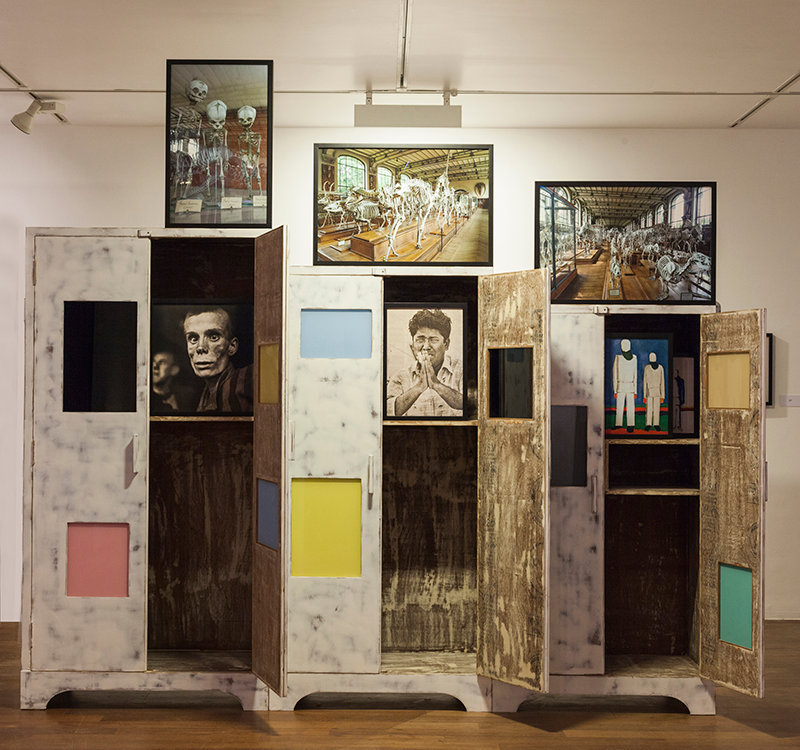"After Midnight" He is an interestingly beautiful collection of art pieces contributing to a very amazing exhibit. The context of this exhibit is late 40's in last century with a content representing modernizing of Indian Art, it's evolution and how it all seemingly merges into collection of geometric shape, featuring what appear to be fully functioning 3-dimensional cabinets with space to hold 2-dimensional paintings.
The paintings are made by multiple different painters hence the different styles and technique of featured paintings made with old and water colors.
The overall contour are both vertical and horizontal and combine with each other to make multiple square and rectangle shapes that form into one another. The very bottom of the cabinets have curved style to show negative space that can be seen directly through. There is also negative space being used as the cabinet doors are all opening, revealing paintings within. Within the inside of the cabinets are wooden colored textured pattern that repeats through out the inside of the cabinet. Aside from normal colored wood pattern, the inside of the cabinets have different colored squares of warm and cool colors of peach yellow, teal and beige. The colors all appear to have a flesh colored hue.
With the use of empty space inside the cabinets there are three paintings, one for each of the three cabinets. The paintings feature people being depicted in an oppressed manner. There are three paintings above each of one of the three cabinets as well. Those paintings however depict human skeletons in exuberant poses. A deep emotional response in contrast to the to the alive humans right beneath them, almost encapsulated.
From The Moment I had laid my eyes in this exhibit I felt complete attraction and utmost admiration. The skeleton paintings are symbolic to the deathly nature of the oppressed people of the Indian culture that the artist originate from. Inside the cabinets the humans are alive but above them they are skeletons seem like angels floating above their human counter-parts. The flat colored, fleshly toned paintings inside the cabinets represent humanity being confined but still slightly freed to a minimal degree. All in All, I really like this exhibit.


William:
ReplyDeletePlease be very careful with your words- in writing about art remember that certain words mean specific things- like contour, when you used that word I think your are discussing lines but contour lines are something different than what we see here. Also, you write that all the colors have a flesh colored hue- but you point out blue and teal which are not flesh colors... be careful- maybe try to do the assignment earlier so you can review it.